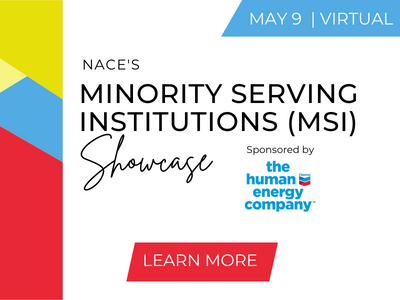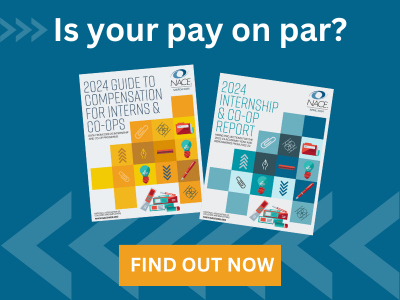Spotlight for Career Services Professionals
Spotlight for Recruiting Professionals
May Habib, CEO of Writer, an AI platform that ensures compliance and consistency with organizations’ inclusivity strategies, says that the most significant finding from Writer’s workplace communication study is a 20 percentage point differential between white respondents and people of color in experiencing toxic communication.
“While 32% of white respondents report being on the receiving end of these types of messages at work since the pandemic began, that number [climbs] to 52% for people of color,” Habib notes.
While, Habib says, many institutions and organizations have stepped up their inclusive communication—especially over the past year—some still fall short, for example, by:
- Over-rotating on male pronouns for leadership, such as using “he” for CEO or director;
- Using “man” for common words like “man hours;”
- Using outdated and racist descriptions in technology, such as “master-slave” in software code or “male-female” in hardware interfaces;
- Using labels like “alcoholic” and “disabled” versus “a person suffering from alcoholism” or “a person with a disability;” and
- Not being considerate of gender by using incorrect pronouns.
When Habib and her staff asked those who had been on the receiving end of toxic communication to provide examples, they heard some egregious examples of non-inclusive language from the study.
Language is a key component of creating an inclusive workplace and brand. Habib identifies some common missteps institutions or organizations make when it comes to creating inclusive workplaces, including:
- Perpetuating outdated hiring practices, like requiring a certain number of years of experience, when research shows that women and people of color don’t apply for jobs unless they’re 100% qualified. On the other hand, the threshold for white men is about 60%;
- Not identifying and acknowledging bias in their review and promotion processes;
- Holding non-traditional candidates to a higher standard or assuming they were lucky versus worthy of success;
- Adding an “only” to positions of leadership, such as a female VP of HR to the executive team and deeming it enough;
- Perpetuating stereotypes through the use of gendered language (e.g., using “he” to describe leaders, board directors, and influential clients, and “she” to describe assistants and support personnel) and imagery that is devoid of diverse subjects (e.g., few or no people of color or people with disabilities) in internal communication and branded materials;
- Seeking to inculcate non-traditional hires by shaping them to the company culture versus changing the company culture to accommodate a diverse group of people; and
- Making DEI the sole purview of HR, but not focusing on it throughout the organization, including setting goals, measuring all executives, and holding those accountable who do not measure up.
Habib offers several resources for institutions, organizations, or individuals who don’t have the time or the money for intensive anti-bias training when it comes to the language they use. Writer offers its own inclusivity glossary.
“In addition, organizations like the Linguistic Society of America, GLAAD, and the National Center on Disability and Journalism have issued guidance for inclusive language,” she recommends.
“Another great resource is The Diversity Style Guide. These guidelines can keep you up to date on what language is appropriate and preferred by various communities.”
Habib offers several effective steps that institutions and organizations can take to be thoughtful and intentional in creating in-person and remote workplaces that embrace different people, needs, and skill sets by:
- Removing bias—Find bias where it exists in hiring, promoting, staffing, and reviewing. Biases like holding non-traditional candidates to a higher standard of performance are very real. Companies can help themselves by taking the shame out of acknowledging bias by talking about it more openly and sharing the changes they are making as a result;
- Eliminating structural barriers—Identify and remove structural barriers like “years-of-experience” requirements in job descriptions;
- Moving beyond “onlys”—Don’t check the box with one-and-done diversity hires. Seek to move beyond onlys and find ways to fill your hiring and promotion pipelines with many non-traditional candidates across the board;
- Avoiding stereotypes—Identify and correct stereotypes, such as words and imagery—in both internal communication and external branded materials—that portray leaders narrowly, such as white men in a boardroom or as an influential client;
- Using respectful language—Take a look at the language you use and make sure it’s as respectful as it can be. Eliminate labels, assumptions, and stereotypes in your everyday communication;
- Making accessibility front and center—Beyond making your physical space compliant with regulations, such as the Americans With Disabilities Act, consider how to make work accessible to people of all cognitive abilities. Can someone who has hearing loss, low vision, or disabilities —or even someone for whom English isn’t their native language—get what they need to thrive at work? This has implications for corporate messaging, data visualizations, company jargon, work schedule, project selection criteria, and more; and
- Codifying this part of your culture in your style guide—Make sure to codify your cultural norms, and the imagery and messages that support them, in your employee guidelines and even in your brand style guide. Enforce them with reminders and by rewarding the right behaviors at all levels.
“Finally,” Habib says, “ask the question—often, and of many people—about how to make the organization more inclusive...and listen to the answer with an open mind.”






